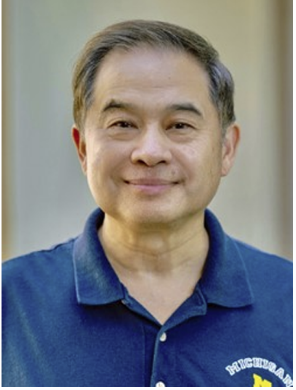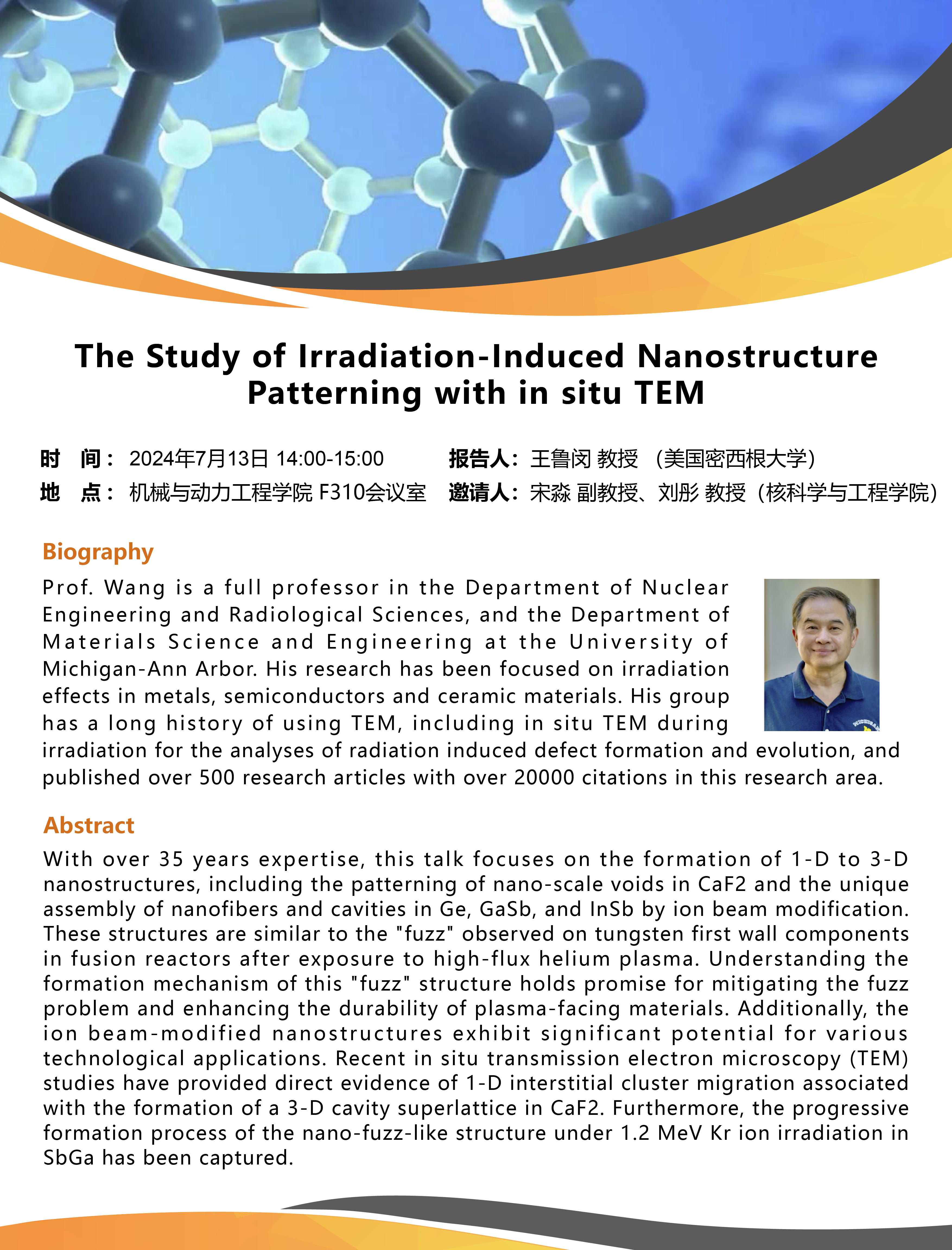

题目:The Study of Irradiation-Induced Nanostructure Patterning with in situ TEM
时间:2024年7月13日 14:00-15:00
地点:hga010网页登录 F310会议室
邀请人:宋淼 副教授、刘彤 教授(核科学与工程学院)
Biography
 Prof. Wang is a full professor in the Department of Nuclear Engineering and Radiological Sciences, and the Department of Materials Science and Engineering at the University of Michigan-Ann Arbor. His research has been focused on irradiation effects in metals, semiconductors and ceramic materials. His group has a long history of using TEM, including in situ TEM during irradiation for the analyses of radiation induced defect formation and evolution, and published over 500 research articles with over 20000 citations in this research area.
Prof. Wang is a full professor in the Department of Nuclear Engineering and Radiological Sciences, and the Department of Materials Science and Engineering at the University of Michigan-Ann Arbor. His research has been focused on irradiation effects in metals, semiconductors and ceramic materials. His group has a long history of using TEM, including in situ TEM during irradiation for the analyses of radiation induced defect formation and evolution, and published over 500 research articles with over 20000 citations in this research area.
Abstract
With over 35 years expertise, this talk focuses on the formation of 1-D to 3-D nanostructures, including the patterning of nano-scale voids in CaF2 and the unique assembly of nanofibers and cavities in Ge, GaSb, and InSb by ion beam modification. These structures are similar to the "fuzz" observed on tungsten first wall components in fusion reactors after exposure to high-flux helium plasma. Understanding the formation mechanism of this "fuzz" structure holds promise for mitigating the fuzz problem and enhancing the durability of plasma-facing materials. Additionally, the ion beam-modified nanostructures exhibit significant potential for various technological applications. Recent in situ transmission electron microscopy (TEM) studies have provided direct evidence of 1-D interstitial cluster migration associated with the formation of a 3-D cavity superlattice in CaF2. Furthermore, the progressive formation process of the nano-fuzz-like structure under 1.2 MeV Kr ion irradiation in SbGa has been captured.
